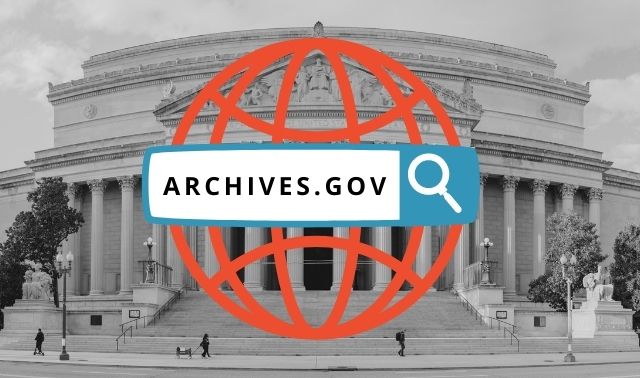Sign up for the Family Tree Newsletter Plus, you’ll receive our 10 Essential Genealogy Research Forms PDF as a special thank you!
Get Your Free Genealogy Forms
"*" indicates required fields

The last time you were in a college or university library, you were probably cramming for finals or sweating out a research paper for English Lit. So your strolls down alma mater memory lane may tend more toward the football stadium or the student union than the library stacks. But now there’s a reason to revisit your alma mater or to explore college and university libraries closer to home—your family history research.
Why turn to an academic library for help with your family tree? True, most college and university libraries don’t have a “genealogy collection.” But academic libraries usually do have substantial history collections, often concentrating on the local area, and many also have special collections, either as manuscripts or on microfilm. Whatever your level of research, you’ll be surprised by the hidden treasures you can dig up in academic libraries. The key is to look for ways to use the materials commonly found in these libraries to enhance your family research.
Uncover New Research Clues
Resources in a college or university library can help you fill in the background of your ancestors’ lives and uncover new clues to focus your research. For example, you might use an academic library to
- discover the history or geography of your grandfather’s home;
- verify an incident in your ancestor’s Civil War letters;
- learn about major historical and cultural events during your great-grandmother’s lifetime;
- research the laws that affected your family;
- locate historical maps, perhaps of the Oregon Trail or the Battle of Franklin.
What kinds of sources can you expect to find? The infinite variety of reference materials will differ with each library. Whether you live near a large university or a local community college, visit the library and explore what it has to offer. If you take a trip to your ancestors’ old stomping grounds, make sure to include nearby academic libraries on your itinerary; you might find special local or regional resources unavailable elsewhere.
Let’s take a look at resources that are common to nearly all college and university libraries, and how you might use them to unlock answers about your ancestors.
1. County and Other Histories
An academic library’s history section will contain well-documented books and journals covering the histories of counties, states, countries, religious or ethnic groups, time periods or specific events. So you might find, for example, The Formative Period in Alabama, 1815-1828 (University of Alabama Press), The Scotch-Irish in America (Arno Press) or the William and Mary Quarterly. Not only are histories rich in interesting detail, they can also be valuable guides to primary or original sources. Where did the author get the information? Make it a habit to read the footnotes or endnotes for tips to other resources.
Following footnotes gave me a wonderful lead on my Frierson family. In Let the Drums Roll by Marise Parrish Lightfoot (Maury County Historical Society), I found a reference to an article about the Zion community in Maury County, Tenn. As my Friersons were among the original settlers of Zion, this article looked interesting. I ordered a copy through interlibrary loan and was astonished when the author cited a court case involving the heirs of Moses G. Frierson, one of my ancestors! With the bibliographic reference I was able to track down the original court record. What if I hadn’t read that first footnote?
2. Chronologies
A chronology is a special type of historical reference. Known also as timelines, chronologies can be general, covering the world, or specific, covering one country or event. If your recollection of History 101 is along the lines of “Columbus discovered America in 1492, and nothing else happened,” a timeline of world events can give you a valuable perspective. Wouldn’t you like to know what songs were popular during your grandmother’s lifetime? Who was the president of the United States when your great-grandfather was traveling the Oregon Trail? Don’t think this is irrelevant to your research. Maybe your ancestor was named for a famous political figure or a literary character of the period. The Timetables of History: A Horizontal Linkage of People and Events (Simon and Schuster), Chronology of the United States (Political Research) and Day By Day: The Forties (Facts On File) are just a few of the titles you might use.
3. Indexes
An index helps you locate journal articles, books, dissertations and essays about a family, a locality or a time period. Many indexes are now available electronically. Among the numerous useful indexes typically found in university libraries are America: History and Life (ABC-CLIO), Dissertation Abstracts International (University Microfilms) and Poole’s Index to Periodical Literature (P. Smith). A good explanation of the America: History and Life index and its relevance to genealogy research can be found in Bringing Your Family History to Life Through Social History by Katherine Scott Sturdevant (Betterway Books).
Why would you want to use these indexes? On a recent trip to the Northern Neck of Virginia, I visited my Glasscocks’ ancestral home. The owner graciously showed me around the interior of the house and casually mentioned a graduate student’s research on the local architecture. As soon as I returned home, I used Dissertation Abstracts to identify the paper. Obtaining the thesis through interlibrary loan, I was thrilled to find it contained a floor plan as well as photos of the Glasscock home.
Any family historian who uses the Periodical Source Index (PERSI) knows that, while it is a wonderful reference tool, it doesn’t provide page numbers for the articles it cites. This can present a problem for the researcher who wishes to use interlibrary loan to order the articles. UnCover started as part of a Colorado library consortium and includes the holdings of the Denver Public Library. With the Denver Public Library’s large collection of genealogical periodicals, UnCover provides access to the contents of many titles indexed by PERSI and offers a quick way of locating those missing page numbers.
4. Bibliographies
Printed bibliographies are another means of finding journal articles, books and other writings. One of the most useful bibliographies for family history is Writings on American History, published annually by the American Historical Association. It lists published works covering the whole spectrum of history. You can locate listings for articles or books by looking under a specific name or locality in the index.
My Friersons moved to College Hill, a small Mississippi community. Checking the Writings on American History index under “College Hill,” I found a reference to an article titled “The War Comes to College Hill” in the January 1954 Journal of Mississippi History. This article contains Civil War reminiscences of College Hill residents. Imagine my surprise and delight when the first person interviewed was my great-grandmother’s first cousin, Patty Frierson!
An example of a more specialized bibliography you might find useful is Ronald M. Gephart’s Revolutionary America, 1763- 1789: A Bibliography (Library of Congress). Remember to check the bibliographies in the books and articles you find for more leads.
5. Biographical directories
Even if you don’t think you have an ancestor who was famous, you might want to consult a biographical directory. The National Encyclopaedia of American Biography (J. T. White & Co.) or the Biographical Dictionary of the American Congress, 1774-1996 (CQ Staff Directories) are just two of the many available. The well-known Who’s Who series also falls into this category. A biographical sketch will often give a person’s family background. At the least, you should be able to find the person’s birth date, birthplace and parents. If you aren’t lucky enough to descend from that famous person, reading about the family may give you clues about where to look for others of the same surname, particularly if the surname is a little unusual.
6. Catalogs
Most researchers are familiar with library catalogs. But did you know that the holdings of specific archives and libraries are sometimes published? A catalog not only lists materials, but also may tell you where they can be found. The Library of Congress’ National Union Catalog of Manuscript Collections, affectionately known to genealogists as NUCMC (pronounced “nuck-muck”), is an invaluable tool for researchers. It identifies collections of personal papers held in libraries and museums all over the country. Because of our mobile society, it’s not unusual to find a collection of Civil War letters from a Mississippi Confederate soldier deposited in a university library in Texas or Oregon. How would you know to look there? That’s where NUCMC comes in handy. The next time you’re planning a research trip, be sure to consult NUCMC for the libraries on your itinerary.
Newspapers in Microform: United States, 1948-1983 (Library of Congress) is another catalog family researchers don’t want to miss. Arranged geographically, Newspapers in Microform lists US newspapers and the locations of microfilm copies of them. It’s a great way to find out if there was a newspaper in your ancestor’s town or county and whether you can order the microfilm on interlibrary loan.
7. Directories
Library directories, telephone directories and old city directories are just a few examples of this reference source. Published annually, the American Library Directory (R. R. Bowker) lists and describes all types of libraries in the United States and Canada. You can use the descriptions to find libraries with local history or genealogy collections and to update P. William Filby’s useful but now dated 1988 Directory of American Libraries with Genealogy or Local History Collections (Scholarly Resources).
Use the American Library Directory to locate a university library near you or any library near your ancestor’s home. Want to find a researcher or living descendants in another county? A letter to the reference librarian there might yield the contact you need. That’s how I found a cousin who’s still farming the land where my great-grandmother lived.
8. Newspapers
An academic library is the most likely repository of newspapers on microfilm and sometimes in paper. The Briscoe Center for American History has an outstanding collection of Texas newspapers, for example. . The Alfred R. Neumann Library at the University of Houston-Clear Lake has among its microfilm collection newspapers from Atlanta, Charleston, Galveston, Memphis, New Orleans and St. Louis, covering dates from the mid-1800s to the mid-1970s. Check the catalogs of your state’s universities for similar holdings.
9. Maps and atlases
University libraries are a good source for maps and atlases. If the university is also a depository for US government documents, it may have the US Geological Survey (USGS) topographic map series for its state. USGS topographic maps show incredible detail and can be used to locate cemeteries and churches. For public land states (all states except the original 13 colonies, Vermont, Maine, Kentucky, Tennessee, West Virginia, Texas and Hawaii), these maps also show township and range grids, allowing you to pinpoint exactly your ancestor’s land and get an idea of how the land looked.
Academic libraries typically collect historical atlases, too. Look for William R. Shepherd’s Historical Atlas (Barnes & Noble), Charles Oscar Paullin’s Atlas of the Historical Geography of the United States (Greenwood Press) and specialized state atlases.
10. State codes and law reports
Libraries supporting law schools usually have the state codes and law reports for every state. The codes and session laws can help you determine such facts as the age range for taxation or how old your ancestor had to be to get married or to own land. Some of the earliest state laws dealt with private actions such as divorces, name changes and financial relief. Law reports contain decisions of cases from various state-level or higher courts, where you might be lucky enough to find a case involving your ancestor’s land dispute or inheritance battle. But even if the university doesn’t have a law school, check to see if the library has special holdings such as the law reports for its state, Session Laws of American States and Territories, 1775-1969 (Xerox University Microfilms) or the Lexis-Nexis electronic database.
11. Special collections
University libraries are particularly noted for special collections of government documents, microfilm, microfiche, rare books or manuscripts. Some universities have an archives housed separately from the general library. Here’s a sampling of microform collections especially interesting to family historians:
- American Culture Series, 1493-1875 (University Microfilms): publications on all aspects of American life. Here you’d find, for example, History of the Old Cheraws, about South Carolina, 1730-1810, originally published in 1867. The American Farrier and Family Medical Companion, published in 1852, gives advice on popular medical remedies.
- Confederate Imprints (Research Publications): official and unofficial publications of the Confederacy. It contains such items as the organization of the army, instructions for mail carriers, hymn books and sheet music.
- History of Women (Research Publications): publications by and about women up to about 1920. An Essay on the Education and Genius of the Female Sex (1795) and The Good Housekeeper (1839) are just two examples.
- Western Americana (Xerox University Microfilms): publications about and contemporary with each successive frontier. The Navigator: Containing Directions for Navigating the Monongahela, Allegheny, Ohio and Mississippi Rivers …, published in 1814, was a guide for travelers. Miners and Business Men’s Directory for the Year Commencing January 1st, 1856 could help trace a participant in the gold rush.
Special collections often aren’t indexed in the library’s catalog. Be sure to ask a reference librarian about any special holdings that may aid your research.
Other Reasons to Use Your Local Academic Library
In addition to the wealth of resources, consider other reasons for using your local academic library. While classes are in session the typical college or university library stays open late several nights a week and is usually open both Saturday and Sunday. Photocopiers are plentiful, and where there are microfilm and microfiche collections, readers and micro-copiers are available. With the explosion in electronic resources, academic libraries usually have multiple computer workstations or even a separate computer lab where you may access the Internet. They also can be a quiet haven if you just need a place to think or to organize your notes without the distractions of home.
Before you go, however, it’s a good idea to telephone ahead to find out if there are any requirements for outside patrons. You also might ask if there are “less busy” times of day and where to park. When you call or visit, be sure to ask for a reference librarian. While everyone on a library’s staff will try to be helpful, the reference librarian will be the most familiar with the resources you want.
A little advance planning can make your visit more productive. Try to focus on a specific person, event or geographic area. Avoid vague or broad questions such as “Do you have anything on World War II?” and keep to a minimum the natural desire to tell your life story. Librarians are eager to help the well-prepared researcher.
Librarians also love to talk about “their” libraries. One positive way to find out what the library has to offer is to invite one of the college or university librarians to speak to your local genealogical or historical society. Building a relationship will benefit both you and the library.
Academic libraries can be gold mines of information for the creative and diligent researcher. Use their resources to learn about how your ancestors lived and the events that shaped their lives. You may discover new clues to follow. They’ll make you glad you went “back to school.”
A version of this article appeared in the April 2001 issue of Family Tree Magazine.
Updated: September 2021
ADVERTISEMENT




